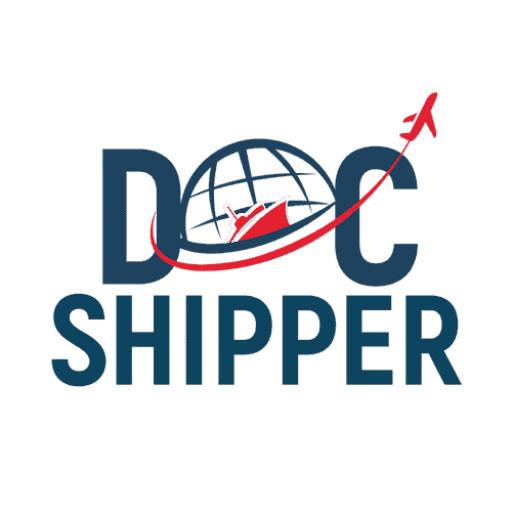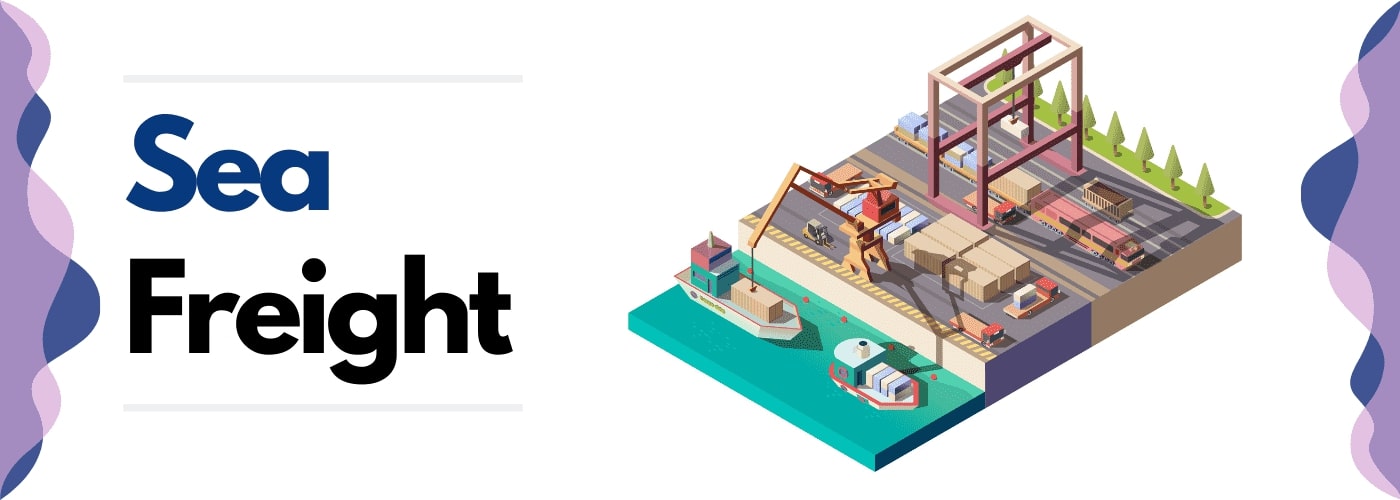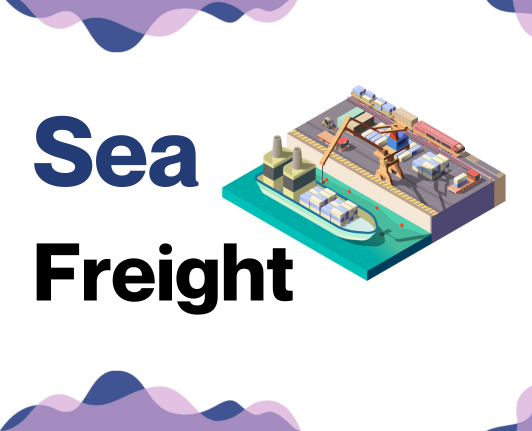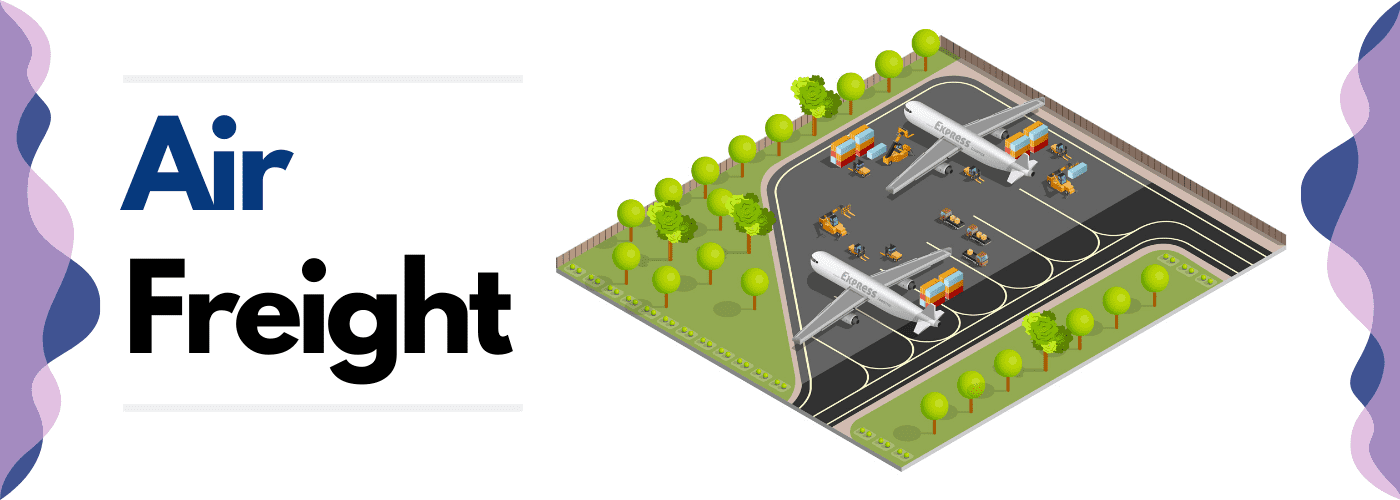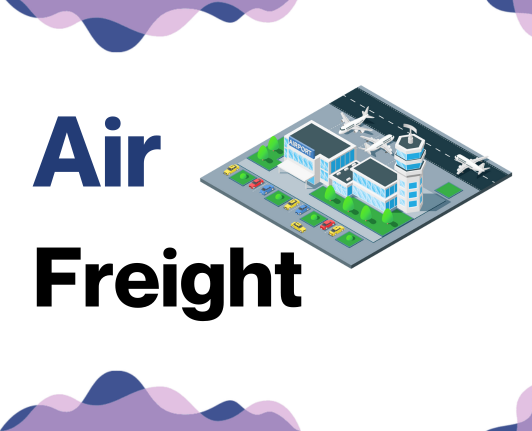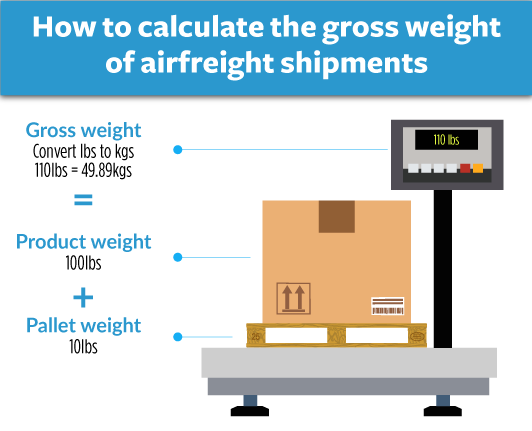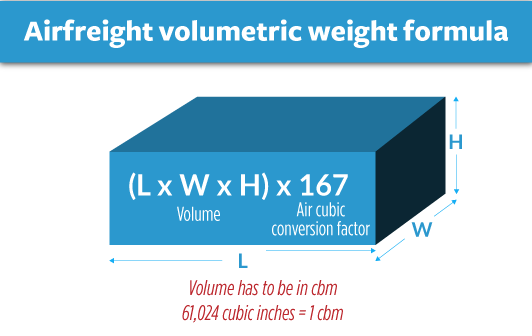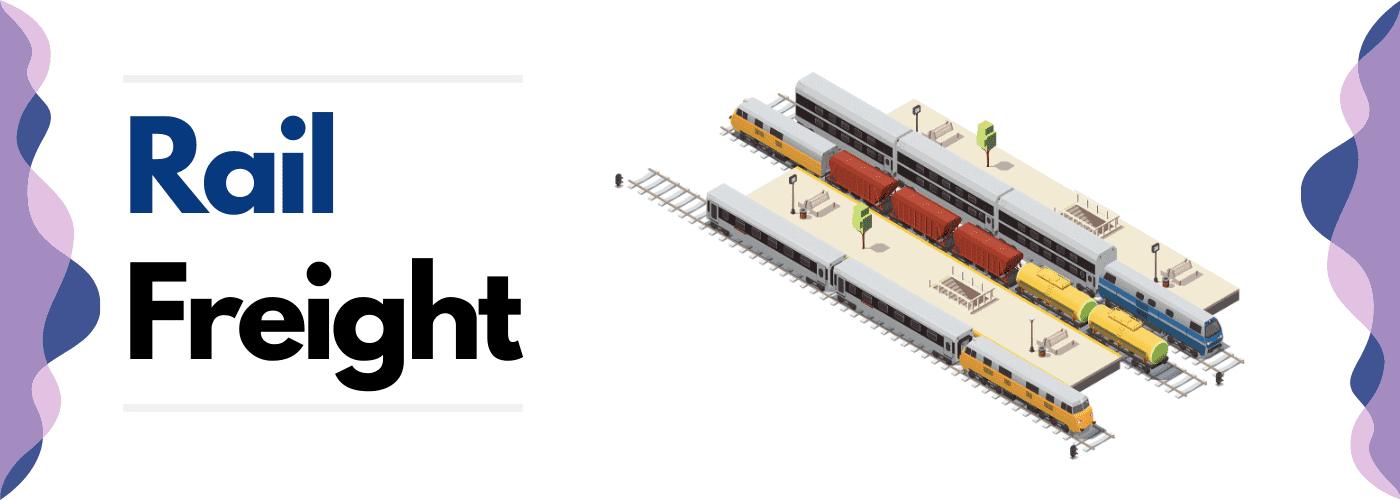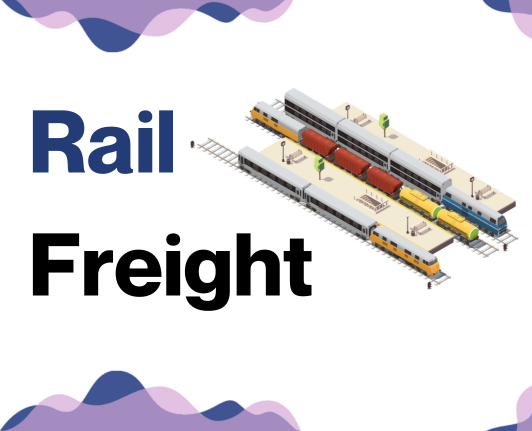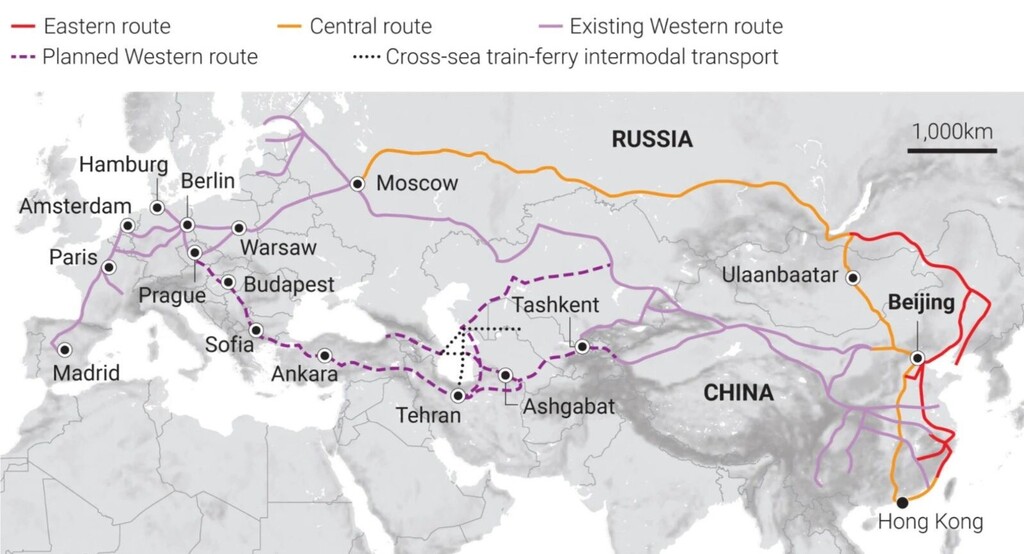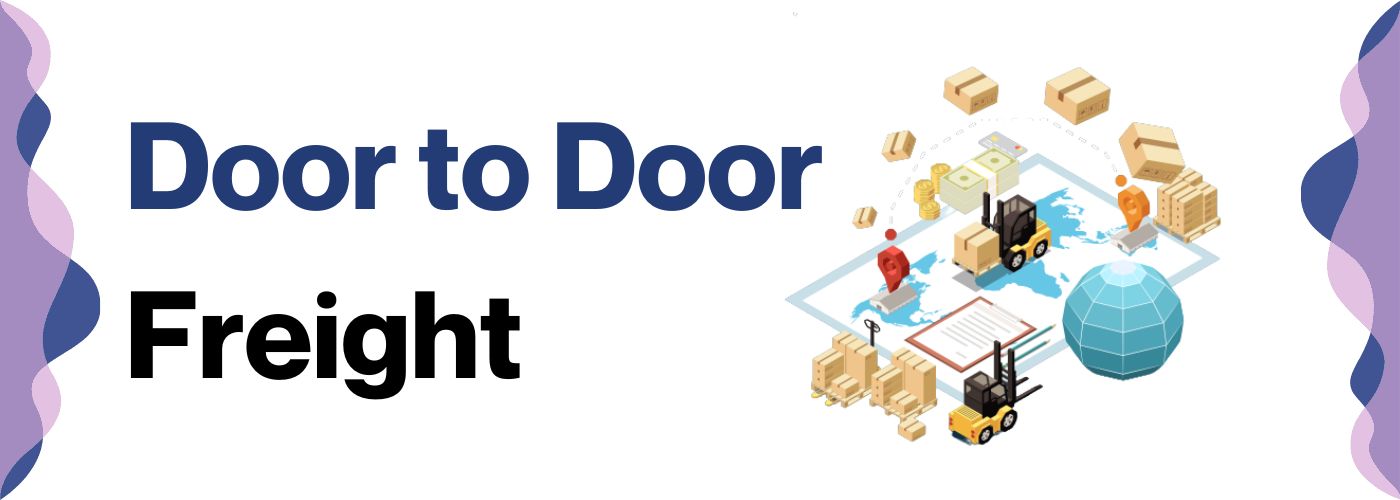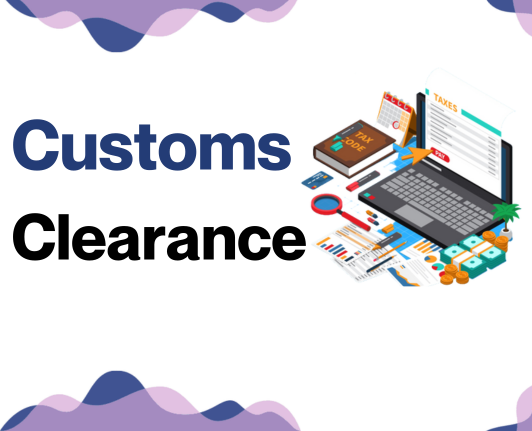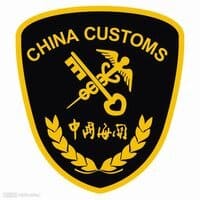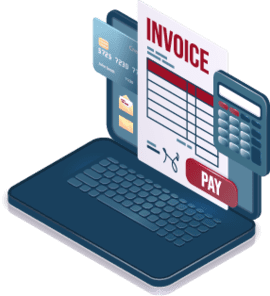Why did the shipment from China to Germany get an award? Because it reached its destination without any freight-ful scenarios! Shipping between these two economic powerhouses, however, can be tricky. With many challenges such as determining the most cost-efficient rates, estimating transit times, and complying with ever-changing customs regulations, businesses have a lot to navigate.
Through this guide, expect a broad spectrum of pertinent information, ranging from insights into diverse freight options like air, sea, road, or rail, to an understanding of the complex customs clearance system, dutiful duties, inevitable taxes, and business-centric advice. Our objective? Make your shipping experience less daunting and more strategic.
If the process still feels overwhelming, let DocShipper handle it for you! As a well-versed international freight forwarder, we're here to streamline every step of your shipping journey, turning potential pitfalls into bold business success.
Which are the different modes of transportation between China and Germany?
Picturing international freight can feel like seeing a bunch of puzzle pieces ready to be placed together strategically. Choosing the right form of transport is a key part of completing this puzzle, especially when dealing with the significant distances, say, between China and Germany. You must consider the sprawling geography and the multiple country borders that could limit some shipping routes. But don't despair! Your freight journey needs the perfect mode; be it air, sea, or rail - each equipped to tackle the unique challenges set forth by this specific route. Let's dive in and discover your perfect fit.
How can DocShipper help?
Looking for a seamless way to ship goods between China and Germany? DocShipper can easily manage every step for you. From customs clearance to choosing the best transport method, we've got you covered. Touch base with us to get a free quote within 24 hours or dial into our consultants' expertise at no cost!
DocShipper Tip: Sea freight might be the best solution for you if:
- You are shipping large volumes or bulky items, as sea freight offers the most space at a cost-effective rate.
- Your cargo doesn't have an urgent deadline, as sea freight typically has longer transit times compared to air or rail.
- Your shipping routes are between major ports, allowing you to leverage the extensive global network of sea shipping lanes.
Sea freight between China and Germany
China and Germany share a strong trade relationship, with a heartbeat of import-export activity thrumming through their key industrial ports. Think of sea freight as the colossal container ship of this interchange, linking pivotal ports like Shanghai and Hamburg. Now, remember, this ship may not be the fastest in the fleet, but it’s undisputedly the muscle, effortlessly carrying high-volume goods. It's your sturdy, cost-effective packhorse across the seas.
But don't be quick to hoist sails! We’ve seen shippers stumble over hurdles. This route tests patience with its complex processes and unique specifications that can fast turn into quicksand for the unwary. Now picture this guide as your trusty compass, revealing best practices and solutions to nudge your cargo safe and sound from dock to destination. We've got a nifty map to trace this intricate journey, offering clear, practical insights to sail beyond the sea of mistakes. Welcome aboard, let's set sail on smoother waters!
Main shipping ports in China
Port of Shanghai
Located in the heart of Shanghai at the mouth of the Yangtze River, this port is vital for serving the booming eastern provinces, with a shipping volume of 43.3 million TEUs. Its key trading partners include the United States, Europe, and the ASEAN countries. The Port of Shanghai stands out for its massive Yangshan Deep-Water Port and for being the busiest container port in the World since 2010. If you're looking to tap into the consumer markets of eastern China or want a well-connected port with global reach, the Port of Shanghai could be an indispensable part of your shipping strategy.
Port of Ningbo-Zhoushan
Situated in the Zhejiang province, this port is paramount for Zhejiang's bustling manufacturing industries, handling 27.5 million TEUs of cargo. The port is strategically important due to its location in the Zhejiang Free Trade Zone and as it's one of the largest ports worldwide for bulk cargo. Key trading partners include the U.S., Japan, and South Korea. If bulk commodities or regional markets are a part of your business, the Ningbo-Zhoushan Port could enhance your logistics thanks to its specialized bulk handling capabilities.
Port of Shenzhen
Encompassing multiple ports along the coastline of Shenzhen, Guangdong province, the Port of Shenzhen is a key player for the dense industrial regions of the Pearl River Delta, with a shipping volume of 25.2 million TEUs. Key trading partners are ASEAN countries, the U.S., and Europe. The port is one of the fastest-growing container ports in the world and holds a strategic position in China's Belt and Road Initiative. If speed and connectivity are pivotal to your operations, the Port of Shenzhen can be a critical element in your supply chain.
Port of Guangzhou:
Located on the Pearl River, the Port of Guangzhou is vital for southern China, handling 21.9 million TEUs. Its key trading partners include Australia, the U.S. and ASEAN countries. The port plays a significant strategic role as part of the Guangdong Free Trade Zone. If your products target the wealthy markets of southern China, Port of Guangzhou, being a comprehensive hub, could fortify your logistics strategy.
Port of Qingdao
Situated on the Yellow Sea, the Port of Qingdao serves the prosperous Shandong province, handling 18.3 million TEUs. Key trading partners involve the U.S., ASEAN countries, and Australia. Given its deep-water facilities, it's one of the most efficient ports in the world. For businesses focusing on refrigerated goods or hazardous materials, the Port of Qingdao, known for its specialized handling, could be a potent facet of your shipping plan.
Port of Tianjin:
Located at the convergence of the Grand Canal and the Haihe River, the port is crucial for serving northern China, with a shipping volume of 16 million TEUs. The port holds strategic importance as China's maritime gateway to Beijing. Major trading partners include the EU, ASEAN countries and the U.S. If targeting China's northern markets or need cross-border rail or road connections, the Port of Tianjin, being a comprehensive logistics hub, can solidify your shipping strategy.
Main shipping ports in Germany
Port of Hamburg
Location and Volume: Located in the Hamburg-Mitte quarter, the Port of Hamburg is a fundamental gateway for businesses aiming to reach central and eastern Europe. It manages a shipping volume of over 8.7 million TEUs per year.
Key Trading Partners and Strategic Importance: Hamburg's primary trading partners are China, the USA, and Russia which further emphasizes the strategic importance of the port. The port boasts of state-of-the-art facilities, enabling it to handle a variety of goods including containers, bulk, and break-bulk cargo.
Context for Businesses: If your business seeks a gateway to the prosperous European markets, the Port of Hamburg, with its efficient hinterland connections and versatile cargo handling capabilities, could be an important part of your shipping strategy.
Bremerhaven Port
Location and Volume: Bremerhaven Port, located in the city of Bremerhaven, stands out due to it being one of the largest automobile ports in Europe, handling approximately 5.1 million TEUs annually.
Key Trading Partners and Strategic Importance: It serves key global markets like the US, South America, and Russia. With direct access to North Sea shipping lanes, the port is strategically placed for transatlantic trade.
Context for Businesses: If your firm deals with the automobile industry or trades with North American markets, the Bremerhaven Port's specialization and strategic location could greatly enhance your logistics efficiency.
Rostock Port
Location and Volume: The Rostock Port, situated in the north-eastern part of Germany, is a multi-modal and pivotal port in Germany, dealing with approximately 2 million TEUs per year.
Key Trading Partners and Strategic Importance: Major trading partners are Scandinavian and Baltic countries along with Russia. Its direct connectivity to the Baltic Sea makes it strategically beneficial for regional trade.
Context for Businesses: If your business targets Scandinavian, Baltic, or Russian markets, incorporating Rostock Port into your strategy could provide a competitive edge, given its regional connections and multi-modal capabilities.
Port of Wilhelmshaven
Location and Volume: The Port of Wilhelmshaven is situated at the Jade Bight, North Sea. This deep-water port has an annual handling capacity of around 2.7 million TEUs.
Key Trading Partners and Strategic Importance: Wilhelmshaven’s main trading partners include Asian countries, in particular China. The unique features of this port lend it the strategic ability to handle ultra-large vessels that many other European ports cannot.
Context for Businesses: If your business manages large volume freight or trades primarily with Asian markets, the Port of Wilhelmshaven, with its deep-water berths and extensive handling capabilities, would be well suited to meet your business needs.
Port of Kiel
Location and Volume: Based in the capital of Schleswig-Holstein region, the Port of Kiel is an important hub for passenger and cargo services, managing about 7.5 million tons of cargo annually.
Key Trading Partners and Strategic Importance: Predominantly serving the Baltic nations, Russia, and Scandinavian countries, Kiel has a strategic role in sustaining trading links with northern European markets.
Context for Businesses: If your enterprise focuses on high-value goods or fast-moving consumer goods destined for northern European markets, the Port of Kiel, known for its passenger and RoRo services, can efficiently cater to your shipping needs.
Port of Lübeck
Location and Volume: Nestled in the state of Schleswig-Holstein, the Port of Lübeck is a significant roll-on-roll-off port, managing 26 million tons of freight traffic annually.
Key Trading Partners and Strategic Importance: Swedish and Finnish markets are key partners, with the port's location providing a strategic advantage as a northern gateway to the Baltic region.
Context for Businesses: If your business involves frequent shipping of vehicles, machinery, or other RoRo cargo to Scandinavian or Baltic markets, the specialized facilities of the Port of Lübeck could streamline your shipping operations.
Should I choose FCL or LCL when shipping between China and Germany?
Sea freight between China and Germany presents two main options: Full Container Load (FCL) or consolidation (Less than Container Load, LCL). Your business's shipping requirements should dictate the choice, as this decision can significantly sway cost, delivery speed, and success of your export-import journey. Shaping your understanding of FCL and LCL touches upon the heartbeat of tactical shipping; it's an art and a science combined. Ahead, find insights to help you unravel their differences and identify the perfect fit for your unique needs, thereby saving cost and time while ensuring a smooth shipping experience.
LCL: Less than Container Load
Definition: LCL, or Less than Container Load, refers to a shipping method where multiple shippers' cargo share space in one container. This type of freight service provides an economical solution when you don't have enough goods to fill an entire container.
When to Use: LCL shipping is preferable when your cargo takes up less than 13-15 cubic meters (CBM). It's a flexible option for low volume shipments as it bypasses the need for waiting until you have enough goods to fill a 20 or 40-foot container.
Example: If you're a German retailer importing unique pieces of furniture from various small producers in China, each producer may only provide one or two CBM of goods. Instead of waiting for more goods or paying for an underutilized full container, you can use the LCL shipment service to keep your inventory moving and costs low.
Cost Implications: While LCL freight rates may seem higher on a per-CBM basis compared to FCL (Full Container Load), the overall expenditure is typically lower due to prorated container space. Also, be aware that additional handling involved in LCL can lead to more customs, terminal, transport, and clearance charges. It's essential to consider these cost aspects when deciding.
FCL: Full Container Load
Definition: Full Container Load (FCL) shipping is a method of transporting large volumes of goods where one container is used exclusively for a single consignee. In fcl shipping, you reserve either a 20'ft container or a 40'ft container for your cargo only.
When to Use: FCL shipping is most cost-effective and safe when the cargo size is more than 13/14/15 CBM. As you'd have exclusive use of the fcl container, it remains sealed from origin to destination, providing high security for your goods.
Example: Consider Firm A that exports machinery parts from China to Germany. Their goods fill at least half a container. In this case, opting for FCL and getting an fcl shipping quote would be smart. It would ensure their goods are safely sealed away, reducing the risk of damage during transit.
Cost Implications: Although the upfront cost of FCL may be higher than Less Container Load (LCL), it proves to be cheaper, as you're shipping in high volume. You're paying for the whole container, irrespective of whether it's filled completely or not. Keep in mind that a 20'ft container can carry about 25-28 CBM and a 40'ft container can load 55-60 CBM.
Unlock hassle-free shipping
Unsure whether to ship by consolidation or a full container from China to Germany? Let DocShipper simplify the decision for you! Our freight forwarders can evaluate your cargo size, shipping frequency, and budget to deliver a tailored optimal logistic solution. You can trust our ocean freight experts to navigate regulatory hurdles and streamline your international delivery. Ready to make cargo shipping hassle-free? Contact us now for a free estimation!
How long does sea freight take between China and Germany?
Shipping goods between China and Germany via sea freight usually takes an average of 30-40 days. These transit times can fluctuate depending on factors like the specific ports of origin and destination, the weight and nature of the goods being transported. For a tailored quote designed to meet your business' specific needs, reaching out to a freight forwarder like DocShipper would be an excellent step forward.
Review the general transit times between key Chinese and German freight ports in the table below:
| China Freight Ports | Germany Freight Ports | Average Transit Time (in days) |
| Port of Shanghai | Port of Hamburg | 48 days |
| Port of Ningbo | Port of Bremen | 46 days |
| Port of Shenzhen | Port of Wilhelmshaven | 36-48 days |
| Port of Guangzhou | Port of Rostock | 36-43 days |
*These times are illustrative averages and can vary based on several factors, so for a specific estimate, it's advisable to get a tailored quote.
How much does it cost to ship a container between China and Germany?
Understanding the cost of shipping a container from China to Germany is an essential step in your logistics planning. However, due to various influencing factors such as Point of Loading, Point of Destination, nature of goods, the selection of the carrier, and market fluctuations, pinpointing an exact ocean freight rate is complex. You might encounter a wide price range for shipping cost per CBM, making predicting exact expenses challenging. But worry not, our devoted shipping specialists are at your service. They evaluate each scenario individually, ensuring you receive the most competitive, customized rates for your specific shipping needs.
Special transportation services
Out of Gauge (OOG) Container
Definition: An OOG container, short for Out of Gauge, is a specific type of shipping method designed to transport cargo that doesn't fit the standard dimensions of a container due to its length, height, or width.
Suitable for: Items with irregular shapes or over-dimensional equipment, such as machinery, vehicles, construction equipment, or large pre-assembled parts.
Examples: A yacht that extends beyond a standard container's measurements would need an Out of gauge cargo option for transportation.
Why it might be the best choice for you: If your goods don't conform to standard container sizes, choosing OOG containers will ensure safety during transit, providing a secure way to ship non-standard items between China and Germany.
Break Bulk
Definition: Break bulk pertains to individual units of goods, grouped, packed, and then loaded separately onto the vessel. They are not loaded in a container during the shipping process.
Suitable for: This method is ideal for cargoes too heavy or voluminous to fit into containers.
Examples: A factory's worth of machinery, construction steel, or large generators would be transported effectively as break bulk.
Why it might be the best choice for you: If your cargo is sizeable and not suitable for conventional containers, break bulk can offer a comprehensive solution, making it easier to load and unload your goods.
Dry Bulk
Definition: Dry bulk is characterized by the transportation of unpackaged, loose cargo like grains, minerals, and coal.
Suitable for: Ideal for transporting large quantities of loose cargo load that can be poured, such as coal, gravel, or grain.
Examples: If a business needs to ship a large quantity of coal or grain from China to Germany, they'd likely use dry bulk shipping.
Why it might be the best choice for you: If your goods are hewn from the earth, like minerals, grains, or gravel in high quantities, dry bulk provides an economical and efficient way to transport these resources.
Roll-on/Roll-off (Ro-Ro)
Definition: In a Roll-on/Roll-off method, cargo is rolled onto a specialized ro-ro vessel on its wheels or using a platform vehicle.
Suitable for: This option is perfect for shipping things that move on wheels like cars, trucks, trailers, or rails.
Examples: When automakers need to get new cars from the factories in Germany to sales lots in China, they typically choose the Roll-on/Roll-off method.
Why it might be the best choice for you: If you're transporting vehicles or machinery on wheels, Ro-Ro negates the need for complex loading and unloading, as items can simply be driven on and off the ship.
Reefer Containers
Definition: Reefer containers provide refrigeration for the transport of perishable goods, maintaining a specific temperature throughout transit.
Suitable for: Ideal for products such as meats, seafood, dairy products, fruits, and vegetables that require controlled temperatures.
Examples: A business that exports German dairy products to the Chinese market would benefit from the maintained refrigeration that reefer containers offer.
Why it might be the best choice for you: If your goods are perishable and need to reach their destination unspoiled, a reef container's temperature control ability protects your investment from China to Germany.
For all your shipping needs from China to Germany, trust DocShipper to provide you with all these shipping options and more. To make an informed decision and benefit from professional logistics advice, contact us for a free shipping quote in less than 24 hours.
DocShipper Tip: Air freight might be the best solution for you if:
- You are in a hurry or have a strict deadline requirement, as air freight offers the fastest transit times.
- Your cargo is less than 2 CBM (Cubic Meter), making it more suitable for smaller shipments.
- Your shipment needs to reach a destination that is not easily accessible by sea or rail, allowing you to tap into the extensive network of global airports.
Air freight between China and Germany
Welcome aboard our informational journey of air freight from China to Germany, the express route for your time-sensitive, high-value products like electronics and luxury items. Emitting speed and reliability, this flight path offers cost-effectiveness for tiny but valuable cargo loads. However, shippers often falter on the runway due to common misconceptions.
Many fall into the trap of incorrectly estimating the cost of their goods —think of it like packing a suitcase. You can't just guess the weight, right? The same goes for your freight. Failing to use the accurate weight formula can send your budget flying out of the hangar door. Moreover, unawareness of best practices can escalate costs faster than a Boeing at takeoff. Buckle up as we delve into these common missteps and solutions in our guide, helping you pilot your freight journey with confidence and efficiency.
Air Cargo vs Express Air Freight: How should I ship?
Looking to get your goods from China to Germany with some pep in their step? Here's the skinny: with air cargo, you're booking a ticket for your goods on a passenger airline, while express air freight whisks them away on their own private plane. But what's best for your business? Let's delve into it.
Should I choose Air Cargo between China and Germany?
Air cargo offers a reliable and cost-effective solution for shipping goods between China and Germany. Prominent carriers like Air China and Lufthansa provide this service, operating within a fixed schedule which, while ensuring reliability, can lead to longer transit times. If your shipments range around 100/150 kg or 220/330 lbs, this method becomes increasingly attractive. Yet, regardless of your cargo weight, careful consideration of your budget and timeline will help you make the best choice. Visit the websites of Air China and Lufthansa for more information.
Should I choose Express Air Freight between China and Germany?
If you're shipping smaller cargo- under 1 CBM or 100/150 kg (220/330 lbs)- consider express air freight. It's a specialized service, exclusive to cargo with no passengers. Renowned firms like FedEx, UPS, or DHL offer speedy, reliable delivery globally. These services expedite your shipment, with the delivery times typically set by your chosen courier. Express air freight can be a real game changer for time-sensitive deliveries, enabling your business to meet tight deadlines effortlessly. Make an informed decision based on your specific needs!
Main international airports in China
Baiyun International Airport
Cargo Volume: Handled over 1.83 million metric tons in 2019, making it one of the busiest cargo airports in Asia.
Key Trading Partners: Primarily serves the US, Australia, the Middle East, and other major Asian countries.
Strategic Importance: Serves as an important gateway for sending goods to Southern China, connecting Guangzhou's massive manufacturing sector with the rest of the world.
Notable Features: Holds state-of-the-art infrastructure and is working on a third runway to better handle the volume.
For Your Business: Picking Baiyun could speed up the transit times to your customers in Southern China, crucial for fulfilling orders quickly.
Pudong International Airport
Cargo Volume: Over 3.5 million metric tons of cargo passed through Pudong in 2019, the world's third busiest cargo airport.
Key Trading Partners: Focuses on Europe, the US, and several Asian countries.
Strategic Importance: Located in the Shanghai Free-Trade Zone, it has simplified customs processes that can reduce clearance times significantly.
Notable Features: It has two cargo terminals that allow for efficient goods distribution.
For Your Business: Ideal for businesses keen on quick customs processes and serving customers in Eastern China.
Beijing Capital International Airport
Cargo Volume: Managed around 2 million metric tons of cargo in 2019.
Key Trading Partners: Does business primarily with the US, Japan, South Korea, and Germany.
Strategic Importance: Located in the country's capital, it connects China with over 200 international destinations.
Notable Features: It boasts three terminals, each equipped to handle large volume of cargo and passengers.
For Your Business: If your target market includes Beijing and the surrounding areas, this airport will be a vital link in your shipping process.
Shenzhen Bao’an International Airport
Cargo Volume: Handled over 1.2 million tons of cargo in 2019.
Key Trading Partners: Main destinations include Asia, Europe and North America.
Strategic Importance: Located at the heart of the Pearl River Delta, one of the most affluent regions in China with robust industrial units.
Notable Features: Home to China's largest all-cargo airline, SF Airlines, it hosts a high-tech logistics center.
For Your Business: If you're planning to tap into the affluent markets of the Pearl River Delta, Bao'an Airport is your go-to shipping route.
Chengdu Shuangliu International Airport
Cargo Volume: Over 640,000 tons of cargo were handled in 2019.
Key Trading Partners: Primarily serves European countries, North America, and other Asian countries.
Strategic Importance: It’s the largest airport in Western China and an important hub for transporting goods to and from this region.
Notable Features: A massive logistics park planned in its vicinity promises to become a future cargo hub.
For Your Business: If you aim to reach customers in Western China or want to keep your options open for the whole country, choosing Chengdu could be beneficial.
Main international airports in Germany
Frankfurt Airport
Cargo Volume: Frankfurt Airport handles around 2 million tonnes of cargo annually, establishing it as Europe's largest cargo airport.
Key Trading Partners: The chief trading partners are the US, China, Japan, and the Middle East countries.
Strategic Importance: Located centrally in Europe and serving as a hub for major airlines, it's a powerhouse for global cargo transportation.
Notable Features: With two enormous cargo terminals and high-tech facilities, it offers 24/7 operating hours for air cargo.
For Your Business: Your goods can enjoy rapid and efficient handling due to DIATA Cargo standardised processes and modern cargo handling facilities.
Munich Airport
Cargo Volume: It has a capacity to handle over 380,000 tonnes of cargo annually.
Key Trading Partners: Major trading partners are Europe, the US, and Asia, with particular significance on China.
Strategic Importance: Serves as Lufthansa's second-largest hub, Munich Airport plays an important role in international air cargo.
Notable Features: Its CargoCenter features state-of-the-art logistics and a free trade zone.
For Your Business: Munich can be an alternative to Frankfurt for less congestion and a quicker turnaround.
Cologne Bonn Airport
Cargo Volume: Cologne Bonn Airport manages over 800,000 tonnes of cargo each year.
Key Trading Partners: Main trading regions are Europe, North America, and Asia.
Strategic Importance: As UPS's European hub, it has a high volume of express and e-commerce shipments.
Notable Features: It features around-the-clock operations for air cargo ensuring flexibility.
For Your Business: It accommodates shipments requiring speed, such as IT products and e-commerce items. Ideal if your business operates with tight schedules.
Hamburg Airport
Cargo Volume: Hamburg Airport, with over 75,000 tonnes of cargo annually is smaller than others but significant.
Key Trading Partners: Key regions are Europe, Americas and China.
Strategic Importance: Important for northern Germany and Scandinavia, it's a pivotal route for perishable goods.
Notable Features: It has a large fresh center specifically for perishable goods.
For Your Business: If you're shipping perishables, Hamburg offers rapid handling and a fully cooled process chain.
Leipzig/Halle Airport
Cargo Volume: About 1.4 million tonnes of cargo is processed annually.
Key Trading Partners: Its primary trading partners include Europe, US, and many Asian countries.
Strategic Importance: As a home base for DHL, it's one of the fastest-growing cargo airports in the world.
Notable Features: Open 24/7 for cargo, it has a direct freight train connection and a heavy cargo terminal.
For Your Business: It can be an advantageous alternative due to its comprehensive services for all cargo types including those with specific requirements.
How long does air freight take between China and Germany?
On average, air freight between China and Germany takes approximately 3-5 days. This time frame, however, might differ depending on departure and destination airports, the weight of the cargo, and the goods being transported. Variables such as these can add or reduce run time, making the overall process fluid. For accurate estimates tailored to your specific shipment, it is advisable to connect with a freight forwarder like DocShipper.
How much does it cost to ship a parcel between China and Germany with air freight?
Air freight cost between China and Germany varies widely, with an average rate ranging from $3-$8 per kg. This is due to factors such as distance from departure/arrival airports, parcel dimensions, weight, and nature of goods, making exact cost prediction difficult. But worry not, our team specializes in tailoring competitive quotes for your specific needs on a case-by-case basis, ensuring you get the best possible rates. Ready for your custom quote? Contact us and receive your free quote in less than 24 hours.
What is the difference between volumetric and gross weight?
Gross weight refers to the actual weight of your shipment, including the packaging and pallets. In contrast, volumetric weight, also known as dimensional weight, is a calculation that reflects the package's density.
For Air cargo, volumetric weight is calculated by multiplying package dimensions (length, width, height in cm) then dividing by a standard factor of 6000. For Express Air Freight services, the divisor is normally 5000. Let's take an example. Imagine you have a parcel of 40cm x 30cm x 20cm with a gross weight of 8kg (equivalent to 18 lbs). For Air cargo, its volumetric weight would be (403020)/6000 = 4 kg (9 lbs) and for Express Air Freight, it would be (403020)/5000 = 4.8 kg (around 11 lbs).
Now, why does this matter? The freight charges are based on the higher figure between the gross and volumetric weight. In this case, for both Air cargo and Express Air Freight, charges would be based on the gross weight of 8kg because it's greater than the calculated volumetric weight. Understanding these calculations is crucial to accurately estimate your shipping costs and optimize your logistics operations.
DocShipper tip: Rail freight might be the best solution for you if:
- You are looking for a cost-effective transportation method for large volumes.
- Your shipping route is well-connected by rail, providing a reliable and environmentally friendly option.
- Your cargo's destination and origin are near rail terminals, minimizing the need for additional road transportation.
Rail freight between China and Germany
Did you know the hustle and bustle of the Silk Road has shifted to rails? A game-changing rail connection was established between China and Germany circa 2008, knitting together an economic tapestry across Asia and Europe. This formidable rail line carries a myriad of goods, from electronics to automotive parts, nourishing economies from Kazakhstan to Poland en route.
Blossoming from this rail alliance, China and Germany's partnership is as sturdy as a high-speed locomotive. While rail freight might require more transit time than air shipping, it's substantially friendlier to your pocket. However, customs' labyrinth of rules can be daunting, from mandatory documentation to unexpected tariffs. From restricted items to potential delays, navigating this route might seem like playing a game of chess against Magnus Carlsen!
Fear not, with a bit of research and a solid logistics partner, you could be the king of this route. So do your homework, determine if rail freight's the knight in shining armor for your shipping endeavours!
What are the main train stations between China and Germany?
1. Zhengzhou International Land Port Development and Construction Co
Located at the crossroads of the Longhai and Beijing-Guangzhou railway lines, this central hub ranks as one of China's top inland container depots in terms of container throughput. It provides numerous daily cargo train services to destinations across Europe, and handles 500,000 TEUs (Twenty-foot Equivalent Units) annually. Leveraging this high-volume station could streamline your supply chain, enhancing your competitiveness in the European market.
2. Yiwu Railway Station
Known as the world's little commodity capital, Yiwu is also home to one of the busiest rail cargo stations in China. It serves as the starting point of the Yixing Europe cargo train route, delivering over 300,000 TEUs annually. Key trading partners include Central and Eastern European countries. This station can be a strategic choice for your business should your manufacturing or sourcing base be nearby.
3. Chongqing Xiyong Integrated Free Trade Zone
Located in the southwest of China, this free trade zone provides a gateway to 'New Europe' through a key cargo rail network. It handles 300,000 TEUs annually, linking major cities in Western Europe. Incorporating this station into your shipping strategy may provide direct access to difficult-to-reach European markets.
4. Shenyang European Union Train Station
This is Northeast China's key hub for cargo transportation to Europe. It connects major industrial bases across the region with 28 European countries, handling over 200,000 TEUs annually. Using this station complements businesses looking to reach diverse European markets.
As for Germany:
1. Duisburg Intermodal Terminal
One of the largest inland ports globally. It's strategically located in the heart of Europe's most extensive rail, road, and waterway network. With Duisburg's cargo volume exceeding 3.5 million TEUs per year and connections to nearly 200 worldwide locations, this terminal helps leverage your shipping strategy immensely.
2. Leipzig/Halle Airport Cargo Center
Not just an airfreight hub, Leipzig also boasts an integrated rail-freight center. Its strategic location allows direct links to major European cities and beyond, serving as a crucial gateway for China-Europe cargo trains, making it a viable option for your merchandise from Asia.
3. Maschen Rail Freight Centre
Situated near Hamburg, this is the world's second-largest rail freight yard. It handles over 3,000 trains per week, offering numerous direct services throughout Europe. Incorporating this facility into your shipping strategy could extend your reach within Europe.
4. Munich Riem Marshalling Yard
This rail freight center serves as a pivotal connection between European nations and Asia, including direct cargo services to China. Benefiting from Munich's extensive rail and road networks, this station promises a well-connected shipping route to enhance your freight movement.
How long does rail freight take between China and Germany?
The transit time for rail freight between China and Germany isn’t set in stone. It can fluctuate depending on factors like customs procedures, weather conditions, or cargo type. On average, you’re looking at around 15 to 20 days.
Let's take a closer look at the various rail networks servicing this route, their estimated transit times, and how often they depart. Remember, these figures are estimates - rail transit, like many aspects of international shipping, can be unpredictable.
- Zhengzhou to Hamburg (Germany): ~ 15-17 days, Departs Daily
- Zhengzhou to Munich (Germany): ~ 17-18 days, Departs Monday and Friday
- Zhengzhou to Liege (Belgium)/Milan (Italy): ~ 20 days, Departs Monday, Thursday and Friday
- Chongqing to Duisburg (Germany): ~ 16-17 days, Departs Monday/Friday
- Yiwu to Hamburg (Germany): ~ 16-18 days, Departs Monday/Thursday/Friday
- Yiwu to Duisburg (Germany): ~ 16-18 days, Departs Monday/Thursday/Friday
- Yiwu to Madrid (Spain): ~ 20 days, Departs Monday/Thursday/Friday
- Wuhan to Hamburg (Germany): ~ 17-19 days, Departs Saturday/Wednesday/Thursday
- Wuhan to Duisburg (Germany): ~ 17-19 days, Departs Saturday/Wednesday/Thursday
- Chengdu to Tilburg (Netherlands): ~ 18 days, Departs Wednesday/Sundayy
- Suzhou to Hamburg (Germany): ~ 18-20 days, Departs Sunday
- Suzhou to Duisburg (Germany): ~ 18-20 days, Departs Sunday
- Xi'an to Duisburg (Germany): ~ 18-20 days, Departs Wednesday/Thursday/Friday/Saturday
What are the advantages of rail transport between China and Germany
Rail freight between China and Germany offers a balance that could perfectly meet your shipping needs. For instance, you might be handling electronic components: too delicate for sea freight, too numerous for cost-effective airfreight. This is where rail shines, as a more affordable and safer option. Travelling along the New Silk Road, your products could reach their destination in just 14-20 days, faster than the 30-50 days typically needed by sea. That says nothing of cost - compared to air, rail is up to 60% cheaper, offering significant savings when shipping in bulk. In light of the current trends in global logistics, with skyrocketing air and sea freight rates, rail transport indeed emerges as a reliable yet economical alternative. What's more, it brings lower CO2 emissions, ticking an important sustainability checkbox. With its unique blend of speed, cost, and environmental friendliness, rail freight could be just what your business needs.
How much does shipping goods by train between China and Germany cost?
Determining an upfront cost for train freight from China to Germany is a challenge. Unlike air and sea freight, rail involves multifaceted factors like the type of goods, urgency, and fluctuations in rail fees, making a one-size-fits-all price tag elusive. But fret not! Our team excels at tailoring cost-effective solutions to your unique needs and securing the most competitive rates. Rest assured, we'll quote transparently based on your specific situation. And the best part? Reach out to us and get a custom quote within 24 hours, free of charge. Connect with us today - your cargo is in good hands.
DocShipper tip: Door to Door might be the best solution for you if:
- You value convenience and want a seamless shipping process, as door-to-door takes care of every step from pickup to delivery.
- You prefer a single point of contact, as door-to-door services typically provide a dedicated agent to handle all aspects of the shipment.
- You want to minimize the handling of your goods, reducing the risk of damage or loss, as door-to-door minimizes transitions between different modes of transport.
Door-to-door between China and Germany
Door-to-door shipping - it's like delivering a pizza, but on a grand global scale. From bustling Beijing factories right to a storefront in Frankfurt, we handle everything in your China-Germany logistical journey. With seamless custom clearance, assured cost-effectiveness, and stress-free transportation, door-to-door shipping shines in its entirety. So, without further ado, let's dive in to explore further!
Overview – Door to Door
Facing complex international shipping logistics between China and Germany? Think Door-to-Door service for a stress-free solution. This sought-after service handles everything from pick-up to delivery, simplifying the exasperating paperwork, customs duties, and potential logistical nightmares. However, this convenience might cost you a bit more and could take longer, but it smooths out your logistics experience significantly. Stay tuned to learn why a majority of DocShipper's clientele swear by it. Even with globetrotting goods, remember, shipping could be as simple as a doorbell away!
Why should I use a Door to Door service between China and Germany?
Ever tried herding cats? Managing every aspect of international freight can feel just like that! As it turns out, Door to Door service from China to Germany can be your feline wrangling solution. Here are five reasons why you might want to choose this service:
1. Stress Buster: A business needs todo what it does best, and wrangling shipments usually isn’t on that list. Door to Door service takes this stress off by managing all logistics, allowing you to focus on core business operations.
2. Thumbs-up to Timely Delivery: If a late delivery feels like a race against the clock, think of Door to Door service as your time-turner. These services work closely with all transport parties involved to ensure your shipment reaches its destination promptly, great for urgent cargo.
3. Expert Hands for Complex Cargo: Every shipment isn’t created equal, especially when they expect white gloves. Door to Door services are experienced in handling complex cargo requirements with the required care and diligence.
4. A Smooth Road to Convenience: Imagine sitting back and watching everything being managed with a cuppa hot chocolate. Door to Door service oversees the entire process, including tricky trucking logistics, offering unparalleled convenience.
5. Destination? No Problem: No matter where your goods are headed in Germany, Door to Door services ensure they reach the exact end location. No more figuring out how your shipment will make it from the port or the airport to your recipient.
Simply put, Door to Door service between China and Germany takes away your logistics headaches and puts a thrilling edge to your shipping game!
DocShipper – Door to Door specialist between China and Germany
Experience stress-free shipping with DocShipper. Entrust us with the full journey of your goods from China to Germany. With our A-Z services, you won't lift a finger – we manage everything including packing, transportation, customs, and more, perfecting every shipping method for your needs. Plus, enjoy the luxury of a dedicated Account Executive to assist you. Reach out for a complimentary estimate in under 24 hours or avail of free consultancy from our expert advisers. Your seamless shipping solution is just a call away.
Customs clearance in Germany for goods imported from China
Customs clearance, a critical stage in the import process, involves passing goods through customs so they can enter a country. It's vital for goods imported into Germany from China, but often complicated and fraught with unexpected fees. Hidden charges, obscure duties, complex quotas, and license requirements can all be potential pitfalls, and items risk being held up in customs. Knowing how to handle these challenges is crucial, with the follow-up sections providing more detail. Take advantage of DocShipper's assistance to breeze through this process with any goods globally. We require the origin of your goods, their value, and the HS Code to offer a project estimate. Fear no hurdle, stand ready to conquer your logistical challenges!
How to calculate duties & taxes when importing from China to Germany?
When figuring out your costs for importing goods from China to Germany, a key part involves securing a solid estimate for duties and taxes. The process begins by understanding several elements including: the country of origin of your goods, the Harmonized System (HS) Code, the customs value, the relevant tariff rate, plus any other additional taxes or fees that could be applicable to your products. The initial step in this process is to pin down the country in which the goods were produced or manufactured, as this critically impacts the amount of duties and taxes due.
Step 1 - Identify the Country of Origin
Knowing the Country of Origin, in this case, China, is crucial even before you can start considering the Harmonized System (HS) code or customs duties. Here's why:
1. It confirms your trade route: Essential to know for bookings, planning, and logistics.
2. It impacts customs duties: The European Union, including Germany, has varied tariff agreements with China. Customs duties depend on these agreements.
3. It influences import rules: Specific products have restrictions based on their country of origin.
4. It determines paperwork: Each country has its set of required administrative documents.
5. It sets the stage for negotiations: Understanding where the product comes from can influence your talks with suppliers or clients.
Don't forget to explore the full benefits of the EU-China Investment Agreement. It might lead to lower customs duties, but always keep an eye out for the import restrictions that Germany imposes on certain goods from China.
For a smooth, cost-effective business transition, understanding your Country of Origin is the first step to success. So, dig into the details and discover how it influences your import.
Step 2 - Find the HS Code of your product
The Harmonized System Code, often referred to as HS Code, is a universally accepted coding system that classifies traded products. It is effectively used by more than 200 countries worldwide and it helps in identifying the nature of goods being transported. This code is essential as it not only forms the basis of customs duties and taxes but also aids in collecting global trade statistics.
If you're unsure about your product's HS Code, a good starting point can be asking your supplier. Your supplier is well-versed with the products they're dealing and familiar with the applicable regulatory provisions. Thus, they can provide reliable insights into the suitable HS Code for your product.
If such an option is unavailable, worry not. We have a straightforward method to guide you through finding your HS Code.
Step 1: Visit the Harmonized Tariff Schedule database.
Step 2: In the database, make use of the search bar to input your product name.
Step 3: Once the results are displayed, look for your product under the 'Heading/Subheading' column - your HS code would be there.
A word of caution - accuracy in determining the HS Code is critical. Inaccurate selection of an HS Code can potentially cause hold-ups in your shipment and, in worst cases, invite penalties. Hence, please ensure the correct and precise HS Code has been chosen for your product.
Here's an infographic showing you how to read an HS code.
Step 3 - Calculate the Customs Value
In the world of shipping, the customs value and product value aren't always the same. Think of it this way, you're a toy manufacturer in China and you're shipping a container of toys, value $10,000, to Germany. But the customs value isn't just about the cost of those toys. It's a wider picture, a CIF value, which stands for the Cost of the goods, Insurance and Freight.
To paint a more vivid picture, let’s consider a shipment with goods costing $10,000, and the international shipping costs you another $1,000. Then add an insurance cost of $100. The customs value here is the addition of these three: $10,000 (goods) + $1,000 (shipping) + $100 (insurance) = $11,100. Thus, the customs value is always $1,100 more than the value of the goods alone. A seemingly small difference, but it's this figure that customs duties are calculated upon when importing into Germany.
Step 4 - Figure out the applicable Import Tariff
An import tariff is a tax imposed by a country on goods imported from abroad. In the case of Germany, which is part of the European Union, these tariffs are harmonized across all member states.
To determine the specific import tariff for your product, use the TARIC System - European Customs. Here, you can enter the Harmonized System (HS) code of your product and China as the country of origin. This will reveal the exact duties and taxes applicable to your product.
Let's say, for instance, you're importing wooden furniture from China. If the HS code for your product is 9403.60 (other wooden furniture), a simple search in TARIC will show the import tariff. For instance, it might show 2.7%.
Additionally, consider insurance and freight (CIF) costs. Assuming your CIF cost is $10,000, you can calculate the import duties using the provided tariff rate. The formula is: CIF cost Import tariff rate = Import Duties. In our example, that would be $10,000 2.7% = $270.
By calculating the import duties correctly, you can avoid any unexpected costs and ensure smooth and efficient transportation of your goods.
Step 5 - Consider other Import Duties and Taxes
You may have already navigated the complexities of standard tariff rates but, it's essential to know that additional import duties and taxes can also apply, depending on the origin and type of goods. For instance, goods like alcohol or tobacco may attract an 'excise duty'. On top of this, sometimes anti-dumping taxes are levied to protect domestic industry against unfair competition.
But it doesn't end there. Meet VAT (Value Added Tax), possibly the most critical aspect to note. This is a consumption tax charged at each stage of the supply chain, and is usually a fraction of the sum total of the good's cost, insurance, and freight (CIF), and duty. For example, in Germany (where standard VAT is 19%), let's say you import toys with a CIF value of $1000, and a duty of $150. Your VAT would be 19% of $1150, or, $218.50.
Remember, it's just a simplified example, the rates can considerably vary. Be prepared, and factor these costs into your budget for a successful import operation. Importing can be like a puzzle, but once all the pieces are in place, it's a rewarding accomplishment.
Step 6 - Calculate the Customs Duties
In Step 6, you'll learn to compute customs duties on shipments from China to Germany. Begin by determining your shipment's customs value - the cost of your goods plus transport until the German border. On this value, you'll ascertain customs duties and possibly VAT.
Let's decipher this with three examples:
1. Customs Duties only Calculation: For a $1000 shipment, assuming a 10% duty rate, your payable customs duty would be $100 (10% of $1000), with no VAT incurred.
2. Customs Duties & VAT Calculation: In addition to the 10% duty ($100), you might also deal with 19% VAT on the sum of the goods' value and customs duties. So your VAT will be $209.1 (19% of $1100), totaling $309.1 due.
3. All Taxes: If your goods attract an anti-dumping tax or Excise Duty too, let's say 5%, it gets added on. With all inclusions ($100 duty + $209.1 VAT + $55 Excise Duty), you owe $364.1 in total.
This process might seem intricate, but don't fret! At DocShipper, we handle every bit of your customs clearance globally. We ensure maximum value, save you from undue charges, and deliver a free quote within 24 hours. Navigate this journey with us!
Does DocShipper charge customs fees?
As a customs broker operating in China and Germany, DocShipper handles your customs clearance and charges related fees, but doesn't levy any customs duties. These duties and taxes, paid directly to the government, are separate from clearance fees. Consider it like this: you hire a lawyer for a process, you pay his fees but the fines and penalties go straight to the court. We'll provide you with documented evidence from the customs office to assure you're paying only official government charges. It's about transparency and trust!
Contact Details for Customs Authorities
China Customs
Official name: The General Administration of Customs of the People's Republic of China.
Official website: http://english.customs.gov.cn/
Germany Customs
Official name: Generalzolldirektion (General Customs Directorate)
Official website: https://www.zoll.de/EN/Home/home_node.
Required documents for customs clearance
Unsure which documents you need for customs clearance? You're not alone. The process can seem daunting. In this section, we'll demystify the essentials: the Bill of Lading, Packing List, Certificate of Origin, and Documents of Conformity (CE standard). Our goal is to make your global trades smoother, so let's decode these documents together.
Bill of Lading
Navigating the shipping waters from China to Germany? Don't forget your Bill of Lading - your golden ticket in the world of cargo. It's both your receipt and proof of ownership, mandatory whether you're transporting stuffed animals or cutting-edge tech. Taking care of this 'BOL' marks the departure of your goods from China and their official acceptance in Germany. Prefer to go paperless? Opt for a 'telex' release, an electronic variant speeding up the transition process. Remember, if you're flying goods across borders, you'll need an Air Waybill (AWB) instead, serving the same function in air cargo. Stay patient and organized - mastering these documents can turn tense cargo moments into smooth sailing (or flying!).
Packing List
Ask any shipping professional and they'll tell you - never underestimate the power of a Packing List. Yes, your business might be making perfectly packaged pallets of automotive parts, hoping to set them sailing from Shanghai to Stuttgart, but without a comprehensive Packing List, your shipment can be left high and dry. It's your job as a shipper to meticulously detail every item, including weight, measurements, and descriptions. The importance of accuracy can't be overemphasized. Whether it's air or sea freight, European customs officials, and also their Chinese counterparts, scrutinize this document to determine the value of your shipment. Picture your goods halted because a 'fidget spinner' was recorded as a 'gadget spinner' - a simple typo could mean complications at the border. Accuracy saves time, money, and keeps your goods moving smoothly from China to Germany!
Commercial Invoice
Your Commercial Invoice is a key player in getting your shipments from China to Germany without drama at the customs gate. It's pivotal to accurately detail the goods - type, quantity, price, and country of origin are just a few of the essentials. Think of it like a passport for your products; discrepancies draw red flags and delays. Keep your invoice aligned with all other shipping paperwork to avoid any mismatch confusion. For instance, if you're shipping industrial machinery, a misaligned description between the Packing List and Commercial Invoice could stall your shipment. So, double-check those details and keep things moving smoothly. Your cargo is counting on you.
Certificate of Origin
In the world of international shipping, the Certificate of Origin (CoO) can be a true game-changer. This nifty document, listing the country where your goods were manufactured, is key when shipping between China and Germany. For instance, you're exporting manufactured electronics from Beijing to Berlin. Your CoO proves your goods' origin, crucial for customs to calculate tariffs or potentially provide preferential duty rates. So, imagine on one shipment you save 5% on duties; with regular shipping, this could radically decrease your expenses over time. Who knew such a piece of paper could seriously boost your bottom line? Don’t overlook the importance of the CoO – it's a major player in the shipping game!
Certificate of Conformity (CE standard)
As you ship your goods from China to Germany, providing a Certificate of Conformity (CE standard) is crucial. This document is well-regarded across Europe, bearing proof that your products comply with stringent EU safety, health, and environmental protection standards. For example, if you're exporting electronics, toys, or machinery, they should bear the CE mark to ensure seamless customs at the German border. This isn't necessarily an endorsement of quality assurance but a permit showing your goods meet the necessary legislative requirements. Unlike the quality standards such as ISO, the CE standard is somewhat akin to the FCC standard utilized in the U.S. To simplify the process, it's recommended to engage a professional agency to help secure the CE standard certification for your products - a prudent investment that eases your shipping journey.
Your EORI number (Economic Operator Registration Identification)
Shipping goods between China and Germany can feel like navigating a maze, but having an EORI Number makes it a breeze. Essentially your shipping passport within the EU, this unique identifier streamlines tracking exports and imports. If you're new to this, think of the EORI Number kind of like your business's ID in the international shipping world—it's essential for customs clearance. Here’s a little secret, the registration process for this golden ticket is straightforward and can be done online. Forget about lengthy procedures and red tape! Keep in mind, time invested in getting your EORI Number is time saved in efficiently moving goods—an advantage that can seriously amplify your business' competitive edge.
Get Started with DocShipper
Caught up in the tangle of customs clearance from China to Germany? Relax. Let DocShipper ease the process. With our comprehensive customs service, we'll handle every step, leaving you hassle-free. So why wait? Reach out to us now and receive a free, no-obligation quote within 24 hours. Make your global shipping smooth and easy with DocShipper!
Prohibited and Restricted items when importing into Germany
Understanding what items you can't bring into Germany may prove complex. It's a crucial step to steer clear of unnecessary problems. Let's decrypt these restrictions and prohibitions to smoothly expedite your goods.
Restricted Products
- For Alcohol and Tobacco products, you have to apply for an import license from the Federal Ministry of Finance.
- If you plan to import pharmaceuticals and certain medical devices into Germany, you'll need explicit authorization from the Federal Institute for Drugs and Medical Devices.
- Bringing in plants, seeds, and other plant products? Make sure you get permit from the Federal Ministry of Food and Agriculture.
- Thinking about importing any kind of weapon? You'll require an import license from the Federal Office of Economics and Export Control
- If you're considering importing endangered animals, plants, or their products, a CITES certificate from the Federal Agency for Nature Conservation is necessary.
- Remember, to bring radioactive materials and certain hazardous substances into Germany, you'll have to get clearance from the Federal Office for Radiation Protection.
- For cultural artifacts, make sure to procure an export license from the region of origin and have it validated by the German customs authorities.
By compiling your documents carefully and ensuring you meet all the import requirements, your shipments should pass through German customs without any significant issues.
Prohibited products
- Narcotics: Specific drugs, both natural and synthetic, are outright banned from importation into Germany.
- Protected animal and plant species: Products made from endangered species, as listed in the Washington Convention, cannot be brought into Germany.
- Counterfeit goods and piracy: Importation of fake goods and pirated items is prohibited in Germany.
- Certain perishable foods: Some fresh food items, including meat and milk (and food items containing them) from non-EU countries, are not allowed.
- Weapons: Certain categorized weapons and ammunition cannot be imported.
- Certain hazardous materials: Germany has strict laws against importing certain hazardous and dangerous materials.
- Radioactive substances: Importing any items or substances that are radioactive is forbidden.
- Items offensive to public policy: This might include items that encourage hate speech, and literature containing extremist political or religious views.
- Unauthorized lottery tickets: It's illegal to import foreign lottery tickets, except those that are officially allowed.
- Certain medical products: Certain pharmaceuticals and medical-related items that don't comply with the German Medicinal Products Act are prohibited.
(Note: This list is not exhaustive, and the specific rules can change. Always check the detailed customs regulations before shipping goods to Germany.)
Are there any trade agreements between China and Germany
Yes, there are significant trade partnerships between China and Germany that can influence your shipping experience. The two nations currently don't have an FTA or EPA, but there are ongoing collaborative initiatives such as the Belt and Road Initiative, aimed at enhancing connectivity through major infrastructure projects. Through industry partnerships and thriving bilateral trade relationships, businesses consistently find effective ways to expedite shipping between these powerhouse economies. Always stay updated on trade policy changes, as they can affect duties, tariffs, and shipping regulations.
China - Germany trade and economic relationship
With its roots dating back to 1972, the Sino-German trade and economic relationship has flourished into an essential dynamic duo. Known for their strong economic relations, the two giants command respect on the global playing field, with highs of €250 billion bilateral trade volume in 2023. China predominantly exports electronics and textiles to Germany, while importing machinery, automobiles, and chemical products, anchoring their interconnectedness. Additionally, they’ve embarked on significant mutual investments, with German companies investing €12 billion in China, while in 2023, Chinese investments in Germany experienced a net withdrawal of €2.3 billion. Today, they continue to explore new frontiers in tech, automotive, and renewable energy sectors, underscoring their pivotal economic ties.
Your Next Step with DocShipper
Worn out from tangled logistics of shipping between China and Germany? With DocShipper at your side, you won't need to sweat over complex paperwork, customs duties, or choosing the best shipping method. Get your business soaring with our seamless, expertly managed cross-border services. Contact us today, and turn shipping hurdles into smooth sailing!
Additional logistics services
Delve into DocShipper's comprehensive suite - from warehouse storage to insurance, ensuring a seamless, hassle-free journey for your goods from start to finish.
Warehousing and storage
Locating trustworthy warehousing in China isn't a walk in the park, more so when specifics like temperature control for delicate goods come into play. But don't fret, we've got you covered! Our top-notch solutions ensure your cargo gets the optimal storage conditions it deserves. Craving details? Click here for more on our dedicated Warehousing services page.
Packaging and repackaging
Shipping between China and Germany? Proper packaging is your secret weapon for safe transit. Trustworthy agents become your defenders, ensuring everything from delicate glassware to heavy industrial equipment is snugly secured. Take 'Techzilla Electronics,' for instance. They saw a 30% reduction in damages after switching to our specialized repackaging. Convinced? More info on our dedicated page: Freight packaging.
Cargo insurance
Transporting goods, unlike storing them where fire insurance may suffice, is subject to a plethora of risks. To mitigate these, cargo insurance covers potential losses from incidents like damage in transit, theft, or natural disasters. Think of an HD TV damaged during a rocky sea journey. With cargo insurance, the loss is covered. Making sure your cargo's safe is as vital as the shipping itself. More info on our dedicated page: Cargo Insurance
Supplier Management (Sourcing)
Overwhelmed by the task of finding reliable suppliers abroad, especially in Asia and East Europe? With DocShipper's Supplier Management service, we'll wipe that worry off your face by scouting dependable sources and managing the entire procurement cycle for you. We'll break down language barriers and guide you step-by-step, simplifying your global sourcing journey. Just like we did for Apparel Co, who now enjoys a seamless supply chain from China to Germany. Visit our dedicated page for more about Sourcing services.
Personal effects shipping
Shifting your world across borders? With our Personal Effects Shipping, we blend professional care and adaptability to safely transport your delicate or oversized items between China and Germany. Think: securely transporting Grandma's antique vase or your prized mountain bike. Find peace of mind, literally in transit. Dive into the details on our dedicated page: Shipping Personal Belongings.
Quality Control
Quality inspection is key when shipping from China to Germany, ensuring your custom goods meet both manufacturing and shipping standards. It's all about avoiding hurdles! Think of a shipment of electronics held up at German customs due to unsatisfactory quality levels. Our service stops such scenarios from becoming reality. More info on our dedicated page: Quality Inspection.
Product compliance services
Keep your goods from getting tangled in red tape! Our Product Compliance Services ensure your cargo stays above board, adhering to international stipulations. We offer lab tests to certify goods for seamless transport, granting peace of mind that your items meet destination regulations. Face less hold-ups, avoid potential fines and enjoy a smoother shipping experience. Learn how we enable businesses to trade effortlessly here: Product compliance services.
FAQ |Freight Forwarder in China and Germany
What is the necessary paperwork during shipping between China and Germany?
When shipping from China to Germany, the essential paperwork for us, DocShipper, includes a bill of lading for sea freight or an air waybill for air freight. We handle these tasks on your behalf. Additionally, you need to supply us with a packing list and commercial invoice for your shipment. Depending on the nature of your goods, other documents such as Material Safety Data Sheets (MSDS) or specific certifications might be necessary. Please ensure that all documents are readily available to avoid any shipping or customs delays.
Do I need a customs broker while importing in Germany?
Utilizing a customs broker while importing goods into Germany is highly advised due to the intricacies of the customs process and the extensive paperwork involved. As DocShipper, we take on the role of representing your shipment at customs for the majority of our operations. Our skilled team can navigate through all the mandatory procedures, details, and documentation to ensure a smooth experience. Employing our services can save you time and potential complications, allowing you to focus on your business. Every country has its own rules and regulations, and Germany is no exception. With us, you'll be well prepared for the import process.
Can air freight be cheaper than sea freight between China and Germany?
While it's challenging to provide a blanket answer for freight costs between China and Germany, various factors such as the route, weight, and volume of the cargo impact the price. However, air freight may be a cost-effective option if your cargo is less than 1.5 Cubic Meters or weighs under 300 kg (660 lbs). At DocShipper, our dedicated account executives distill these complex factors and always present you with the most competitive freight option. Trust that we'll guide you through the decision-making process to optimize your shipping experience.
Do I need to pay insurance while importing my goods to Germany?
While insurance is not required when shipping goods, we at DocShipper strongly recommend it. In the unpredictable world of freight transport, numerous incidents can occur, including damage, loss, and theft. Think of insurance as a preventive measure - a security blanket that covers you in case something goes wrong. So, when importing your goods to Germany or any other region, seriously consider insuring them. This simple precautionary step can save you from potential headaches and unplanned costs down the line.
What is the cheapest way to ship to Germany from China?
The most economical method to ship from China to Germany is typically sea freight, due to the large geographical distance. However, keep in mind that it can take 4-6 weeks. Although air freight is faster, it's more expensive. If you're not in a hurry and looking to save transportation costs, we recommend ocean shipping. Consider the size, weight, and nature of your cargo as well – certain items may require specific handling or faster delivery.
EXW, FOB, or CIF?
Choosing between EXW, FOB, or CIF depends largely on the nature of your relationship with your supplier. Please remember, suppliers are not always well-versed in logistics and having a professional freight forwarder like us at DocShipper oversee the process can ensure a smoother journey for your goods. Suppliers typically sell under EXW (your goods are ready at their factory) or FOB (comprising all local charges up to the departure terminal). Although these practices are common, we offer a comprehensive solution in the form of door-to-door service, taking care of all logistical challenges.
Goods have arrived at my port in Germany, how do I get them delivered to the final destination?
If your goods are covered under CIF/CFR incoterms, you'll need a customs broker or freight forwarder for clearance, import charges, and final delivery. Alternatively, we at DocShipper can handle all this for you under the DAP incoterms. Please touch base with your account executive to clarify these details.
Does your quotation include all cost?
Indeed, we include all costs in our quotation excluding duties and taxes at the destination. For clarity, you can seek assistance from your dedicated account executive to get an estimate of the duties and taxes. At DocShipper, we are committed to transparency and ensure there are no hidden fees to avoid any unwelcome surprises.
